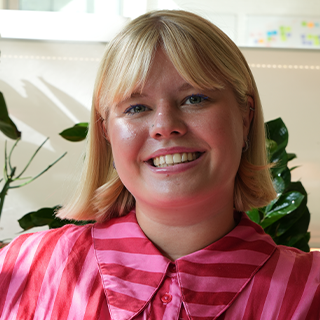From Death Becomes Her to Paris Is Burning, here are 5 films considered queer cult classics

Films have always had the power to resonate with entire communities as well as individuals. I think I speak for a lot of people when I say that Julia Roberts’ roles in both Pretty Women and Erin Brockovich had a gigantic impact on my own feminist ideals. So, it’s also safe to say that when it comes to queer culture and the LGBTQIA+ community, there are certain cult classic movies which we’ll always hold close to our hearts.
Here are five movies you simply need to watch, obsess over and then immediately tell your friends about.
1. But I’m a Cheerleader
But I’m a Cheerleader came out in 1999, and over the past 24 years, it’s become a firm fan-favourite, particularly among queer youth. Instantly recognisable for its oversaturated bubble gum pink aesthetic and insanely catchy soundtrack, But I’m a Cheerleader managed to take a serious topic such as conversion therapy, and turn it into a lesbian romantic comedy that actually gave two female protagonists a happy ending.
The cast includes the literal mother of Drag, Ru Paul, as one of the camp counsellors, the iconic Natasha Lyonne as lead character Megan and then of course Lyonne’s love interest Graham, played by Clea DuVall.
One of the reasons this film is so loved by the LGBTQIA+ community, aside from the obvious, is because of how truly ditsy it is. Even removing some of the more obvious satire, every single element of the plot is perfectly caricatured. From the way it perfectly captures the absurdity of societal gender expectations to how it always teeters the line between sweet and raunchy, it just hits.
2. Death Becomes Her
You know when someone asks you what your favourite films are, Death Becomes Her will always make my top five. It’s been one of my go-to comfort films for ever and yet for some reason, outside of the queer community, it’s historically been criminally underrated.
First of all, it stars two of the most iconic women in Hollywood: Meryl Streep and Goldie Hawn. On top of all that, the plot revolves around two beautiful ex-best friends who practically sell their souls and purchase a magic elixir in an attempt to secure lifelong beauty. If that’s not iconic, I don’t know what is.
The costumes, the makeup, the campy comedy, the satirical violence—it’s undeniable that this blockbuster was made with the LGBTQIA+ community in mind.
3. To Wong Foo, Thanks for Everything! Julie Newmar
For some people out there, this might come across like a bit of a deep cut choice. But for those of us who’ve loved the art of drag since long before the likes of Ru Paul’s Drag Race, this film was one of the most iconic creations of the 90s.
Starring Wesley Snipes, Patrick Swayze and John Leguizamo, To Wong Foo, Thanks for Everything! Julie Newmar marked the first time a major Hollywood studio created a film centred around the lives of drag queens.
This movie has become a classic not simply because of its cultural significance, but because it further opened up the idea that entertainment and comedy didn’t exist solely within heteronormative dynamics.
Of course, there are elements of the film that no longer work given today’s much better understanding of LGBTQIA+ individuals and gender fluidity. But, nevertheless, it’s an important piece of queer history.
4. Jennifer’s Body
Oh, Jennifer’s Body—never has a film captured the rollercoaster ride of female friendships so perfectly. Realistically, who wouldn’t want to spend an hour and 40 minutes of their life watching Megan Fox sadistically hunt and kill teenage boys?
When this film first came out, the mainstream media didn’t really understand it. After the majority of society had finished sexualising Fox, they found the plot to be bizarre and couldn’t quite grasp what the meaning of the narrative actually was.
For the queer community, however, this simply just wasn’t the case. Not only are horror-comedies often filled with high camp, Jennifer’s Body in particular took high school erotica and completely flipped it on its head. We didn’t have to suffer through a film of Fox trying to win these boys’ hearts, we got to watch her murder them—far more entertaining.
5. Paris Is Burning
Last but definitely not least, we have Paris Is Burning. Released in 1990, this documentary focused on the “house” culture of drag queens living in New York City. Filmed in the late 80s, Paris Is Burning had an immediate impact—not only because it received widespread praise from the mainstream media, but because its genius was allowing the individuals on camera to truly speak for themselves and tell their stories authentically.
Of course, there are some valid criticisms of Paris Is Burning that also need to be addressed. For example, as explained by journalist MJ Brown: “The film itself was directed by white, Jewish lesbian Jennie Livingston. As a filmmaker and interviewer, Livingston prevails, framing a beautiful, competitive queer world. In other ways, she fails as an ally, something she has acknowledged but not necessarily rectified. Straight, white audiences viewed Paris Is Burning as scandalous entertainment rather than a portrait of a vibrant community or a vital look at the effects of marginalisation.”
Indeed, one of the most important footnotes of this documentary to consider and remember, is that while queer history and culture has been assimilated in a white cisgendered and heterosexual world, it was Black trans individuals who created and fought for it.





